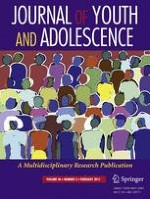20-01-2016 | Empirical Research
How Mental Health Interviews Conducted Alone, in the Presence of an Adult, a Child or Both Affects Adolescents’ Reporting of Psychological Symptoms and Risky Behaviors
Gepubliceerd in: Journal of Youth and Adolescence | Uitgave 2/2017
Log in om toegang te krijgenAbstract
The normative process of autonomy development in adolescence involves changes in adolescents’ information management typically characterized by decreasing disclosure and increasing concealment. These changes may have an important impact on the early detection and timely treatment of mental health conditions and risky behavior. Therefore, the objective was to extend our understanding of how these developmental changes in adolescent disclosure might impact adolescent mental health interviews. Specifically, we estimated the effects of third party presence and type of third party presence (adult, child, or both) on adolescents’ reports of psychiatric symptoms, substance use, suicidal behavior, and childhood adversity. In this representative sample of 3005 adolescents from Mexico City (52.1 % female), administered the World Mental Health Composite International Diagnostic Interview (WMH-CIDI-A), adult presence influenced reporting the most; in their presence, adolescents reported more ADHD, parental mental illness and economic adversity, but less panic disorder, PTSD, drug use and disorder, and suicidal behavior. The presence of children was associated with increased odds of reporting conduct disorder, opportunity for drug use, parental criminal behavior, neglect, and the death of a parent. While adolescent information management strategies are normative and even desirable as a means of gaining emotional autonomy, they may also interfere with timely detection and treatment or intervention for mental health conditions and risky behaviors. Research and practical implications of these findings are discussed.
